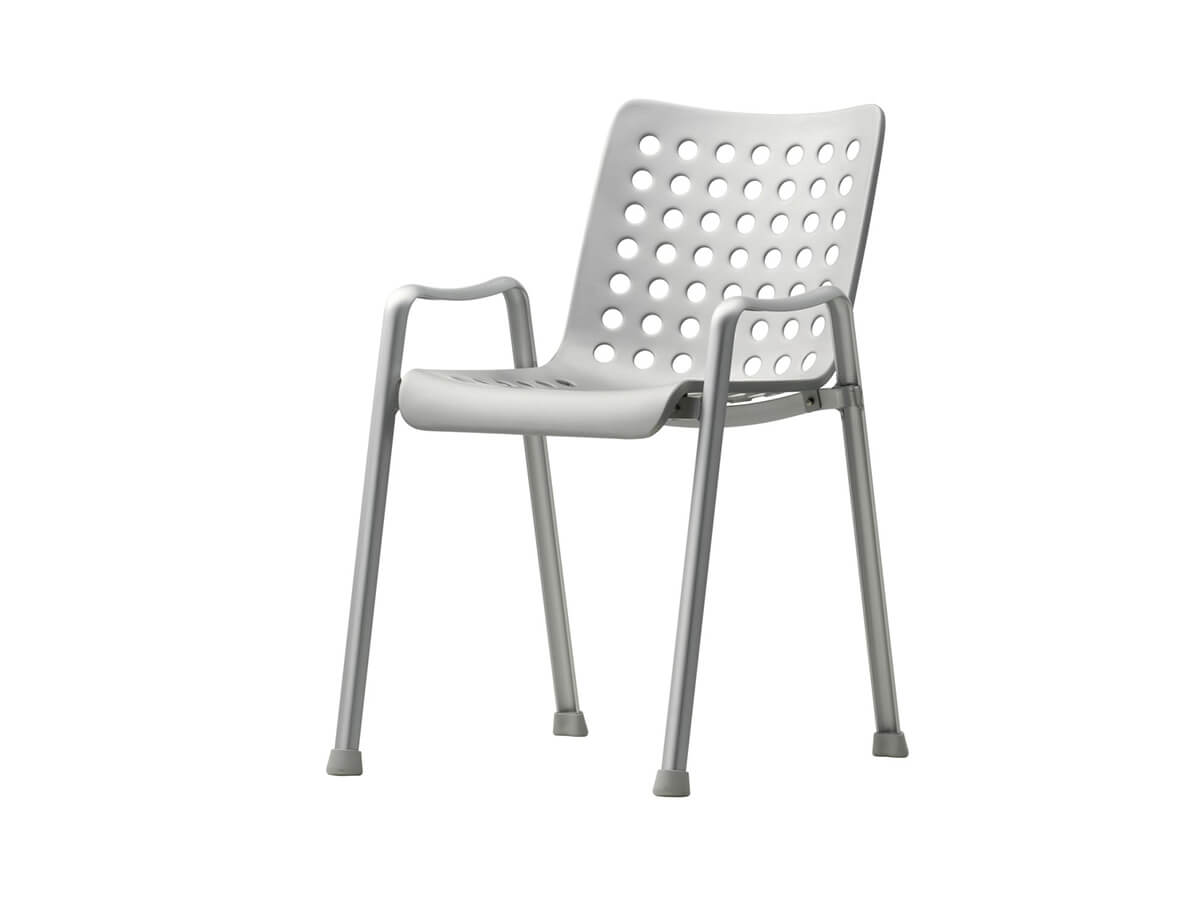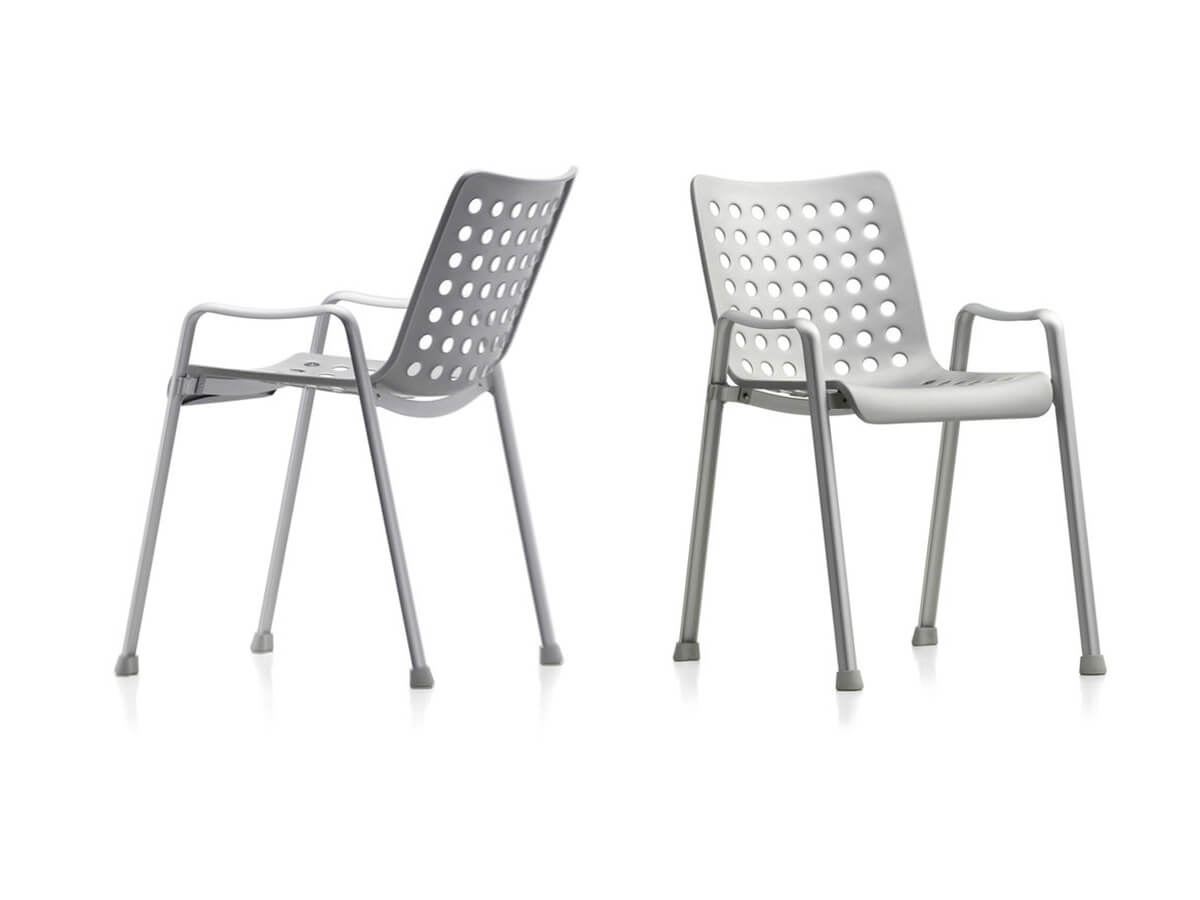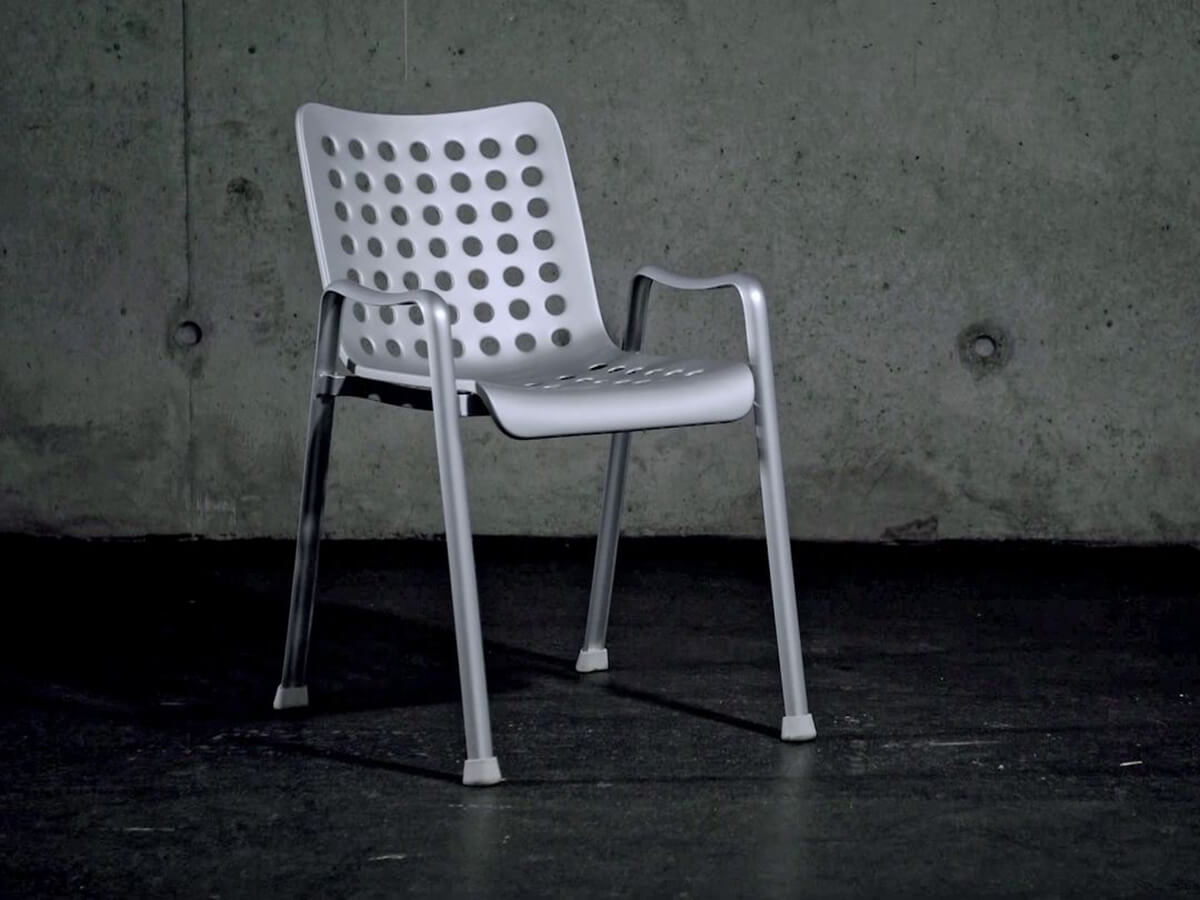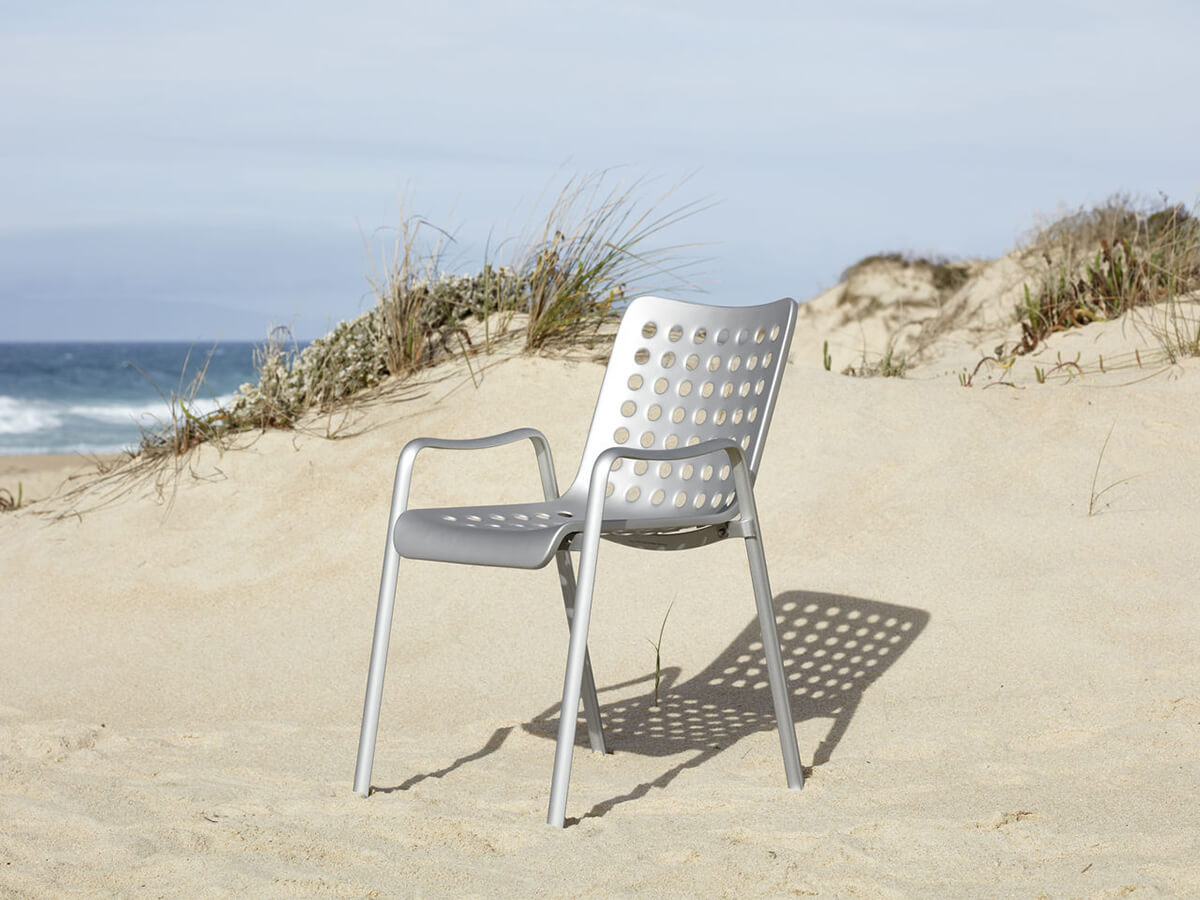Vitra
Landi Chair
Price € 979,00
Hans Coray designed the Landi Chair in 1939 for the Swiss National Exhibition. His project occupies a special place in the history of twentieth century design as the forefather of the then unprecedented type of seat with three-dimensional shell placed on a separate base. The frame in matt anodized aluminum, very light and flexible, is made with a pair of folded profiles connected by means of welded crosspieces which act not only as legs but also as armrests. The shell, on the other hand, has punched holes capable of lightening its weight and giving it flexibility, which have become its distinctive features over time. Lightweight and stackable, Landi is still today an icon of contemporary design, a model for many other derivations and inspirations.
W.51,5 x D.65 x H.79,5 cm
Seat Height 47,5 cm
Salvioni Design Solutions delivers all around the world. The assembly service is also available by our teams of specialized workers.
Each product is tailor-made for the personal taste and indications of the customer in a customized finish and that is why the production time may vary according to the chosen product.
To discover the full range of services available, visit our delivery page.
Select
Select
Select
Swiss by birth, Vitra is a unique company in many ways. Unique in its home collections, light and colorful; unique in its office furnishings, which combine in a masterful implementation design and ergonomics; unique for the designer parterre that enriches its catalog. Among prestigious historical re-enactments and fruitful collaborations, Vitra has always had the ability to relive the past and project to the future. However, Vitra is unique above all for Rolf Fehlbaum's corporate address, where the company transcends the business to fulfill wider social and cultural functions: the creation of a unique project such as Vitra Campus and the annexed Vitra Design Museum is an example.Read more
Designed by
Hans Coray
Hans Coray (1906-1991) was a famous Swiss designer. An eclectic character, his interests and his studies were not restricted to the field of design alone, but ranged from theology to psychology, from graphology to astrology. Close to the circles of Dadaist art in Zurich, he began his first experiments in self-taught design in the 1930s, using mainly metallic materials and focusing on simple and rational forms. He is today mainly famous for his Landi Chair, designed in 1938 and considered one of the most famous creations in the history of Swiss design, exhibited in the permanent collection of MoMA in New York and now re-edited by Vitra. He continued an occasional activity as a designer even in the following two decades, and then devoted the rest of his life to the fine arts, with personal exhibitions of his sculptures in Zurich, Bern and Cologne.Read more




